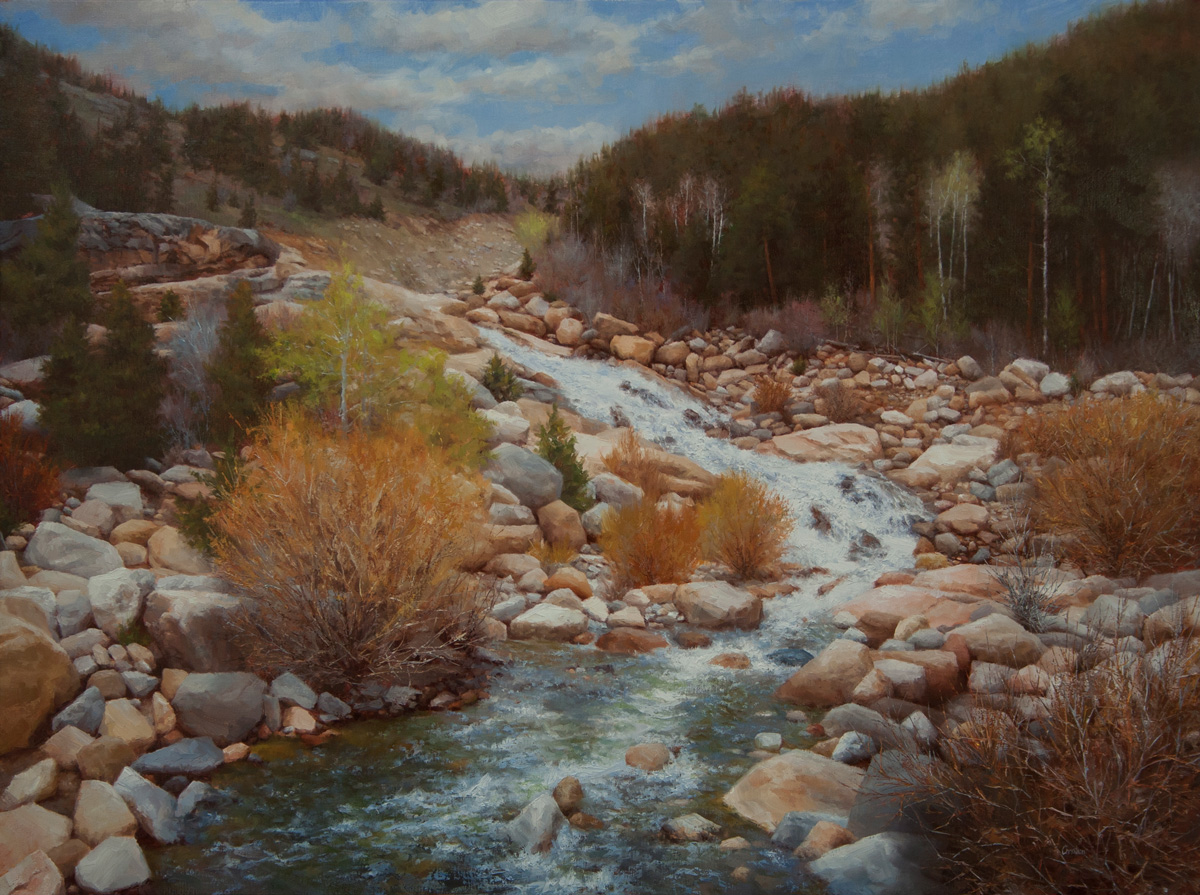Alluvial Fan | 30×40 | Oil on Linen
Inspiration for Alluvial Fan
I’ve always loved large boulders strewn haphazardly about, and the site of Alluvial Fan certainly delivers! (That’s also why this part of Rocky Mountain National Park features so prominently in my paintings.) The comprehensive beauty of RMNP stuns me. I grew up in Florida, a very flat state, and the grand mountain slopes make my imagination soar! I still purpose at the beginning of every year to travel again to Colorado and do some plein air painting in the Rockies. Sadly, I’ve only actually visited twice in the past decade. But hey—maybe THIS year it will happen!
History of the Alluvial Fan in Horseshoe Park
On July 15, 1982 at 5:30 a.m. Lawn Lake broke through the terminal moraine that held it. This moraine had contained the lake since the end of the last ice age, thousands of years ago. The release of 29 million gallons of water swept trees and car-sized boulders the four miles down to the valley floor. In addition to tons of lighter rocks, gravel and sand created a 42-acre alluvial fan.
A trash collector heard the waters crashing down the Roaring River and called park rangers, who evacuated campers at Aspenglen campgrounds. Tragically, the flood still killed two campers at the campground and one other along the Roaring River. Much of the flood’s force was weakened while submerging the meadows of Horseshoe Park, but still had enough force to flood the town of Estes Park to a depth of six feet. Lake Estes to the east of town contained the floodwaters preventing further damage.
Sediments from the flood dammed the Fall River, forming a shallow 17-acre lake. “Fan Lake” provides new habitats for wildlife displaced by the Lawn Lake flood’s debris.
Fall River slowly, continuously erodes the lake’s temporary dam. Eventually, the lake will drain to create wetlands, meadows and forest.


